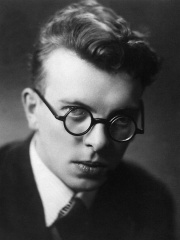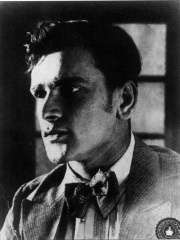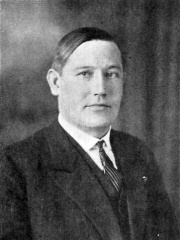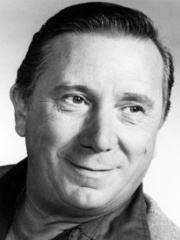WRITER
Saul Alinsky
1909 - 1972

 Saul Alinsky
Saul Alinsky
Saul David Alinsky (January 30, 1909 – June 12, 1972) was an American community activist and political theorist. His work through the Chicago-based Industrial Areas Foundation helping poor communities organize to press demands upon landlords, politicians, bankers and business leaders won him national recognition and notoriety. Responding to the impatience of a New Left generation of activists in the 1960s, Alinsky – in his widely cited Rules for Radicals: A Pragmatic Primer (1971) – defended the arts both of confrontation and of compromise involved in community organizing as keys to the struggle for social justice. Beginning in the 1990s, Alinsky's reputation was revived by commentators on the political right as a source of tactical inspiration for the Republican Tea Party movement and subsequently, by virtue of indirect associations with both Hillary Clinton and Barack Obama, as the alleged source of a radical Democratic political agenda. Read more on Wikipedia
His biography is available in 24 different languages on Wikipedia (up from 23 in 2024). Saul Alinsky is the 4,695th most popular writer (up from 4,717th in 2024), the 7,052nd most popular biography from United States (down from 6,402nd in 2019) and the 534th most popular American Writer.
Memorability Metrics
Page views of Saul Alinsky by language
Among WRITERS
Among writers, Saul Alinsky ranks 4,695 out of 7,302. Before him are Roy Jacobsen, Adikavi Pampa, Uğur Mumcu, Ivar Lo-Johansson, Richard Pococke, and Elisaveta Bagriana. After him are Patrik Ouředník, Juan José Arreola, Johann Wilhelm Ludwig Gleim, Cesar Millan, Jane Wilde, and Tahar Djaout.
Most Popular Writers in Wikipedia
Go to all RankingsRoy Jacobsen
1954 - 2025
HPI: 56.39
Rank: 4,689
Adikavi Pampa
902 - 975
HPI: 56.39
Rank: 4,690
Uğur Mumcu
1942 - 1993
HPI: 56.39
Rank: 4,691
Ivar Lo-Johansson
1901 - 1990
HPI: 56.39
Rank: 4,692
Richard Pococke
1704 - 1765
HPI: 56.39
Rank: 4,693
Elisaveta Bagriana
1893 - 1991
HPI: 56.38
Rank: 4,694
Saul Alinsky
1909 - 1972
HPI: 56.38
Rank: 4,695
Patrik Ouředník
1957 - Present
HPI: 56.38
Rank: 4,696
Juan José Arreola
1921 - 2001
HPI: 56.38
Rank: 4,697
Johann Wilhelm Ludwig Gleim
1719 - 1803
HPI: 56.38
Rank: 4,698
Cesar Millan
1969 - Present
HPI: 56.38
Rank: 4,699
Jane Wilde
1821 - 1896
HPI: 56.38
Rank: 4,700
Tahar Djaout
1954 - 1993
HPI: 56.38
Rank: 4,701
Contemporaries
Among people born in 1909, Saul Alinsky ranks 276. Before him are Clara Calamai, James Agee, Margaret Mee, Massimo Pallottino, Reinhold Münzenberg, and Ramón Villeda Morales. After him are Licia Albanese, Uku Masing, Ernst Andersson, Haruko Sugimura, Ahmed Bahnini, and Willi Horn. Among people deceased in 1972, Saul Alinsky ranks 179. Before him are Rudolf Friml, Vera Inber, Walter Lang, Prithviraj Kapoor, Theodor Blank, and Isak Abrahamsen. After him are Alexander Bek, Havergal Brian, Andrea Andreen, Jan Diddens, Jan Wils, and Rainer von Fieandt.
Others Born in 1909
Go to all RankingsClara Calamai
ACTOR
1909 - 1998
HPI: 56.71
Rank: 270
James Agee
WRITER
1909 - 1955
HPI: 56.70
Rank: 271
Margaret Mee
PAINTER
1909 - 1988
HPI: 56.62
Rank: 272
Massimo Pallottino
ARCHAEOLOGIST
1909 - 1995
HPI: 56.62
Rank: 273
Reinhold Münzenberg
SOCCER PLAYER
1909 - 1986
HPI: 56.54
Rank: 274
Ramón Villeda Morales
POLITICIAN
1909 - 1971
HPI: 56.41
Rank: 275
Saul Alinsky
WRITER
1909 - 1972
HPI: 56.38
Rank: 276
Licia Albanese
SINGER
1909 - 2014
HPI: 56.37
Rank: 277
Uku Masing
PHILOSOPHER
1909 - 1985
HPI: 56.34
Rank: 278
Ernst Andersson
SOCCER PLAYER
1909 - 1989
HPI: 56.28
Rank: 279
Haruko Sugimura
ACTOR
1909 - 1997
HPI: 56.27
Rank: 280
Ahmed Bahnini
POLITICIAN
1909 - 1971
HPI: 56.24
Rank: 281
Willi Horn
ATHLETE
1909 - 1989
HPI: 56.21
Rank: 282
Others Deceased in 1972
Go to all RankingsRudolf Friml
COMPOSER
1879 - 1972
HPI: 56.78
Rank: 173
Vera Inber
WRITER
1890 - 1972
HPI: 56.74
Rank: 174
Walter Lang
FILM DIRECTOR
1896 - 1972
HPI: 56.73
Rank: 175
Prithviraj Kapoor
ACTOR
1906 - 1972
HPI: 56.69
Rank: 176
Theodor Blank
POLITICIAN
1905 - 1972
HPI: 56.53
Rank: 177
Isak Abrahamsen
GYMNAST
1891 - 1972
HPI: 56.47
Rank: 178
Saul Alinsky
WRITER
1909 - 1972
HPI: 56.38
Rank: 179
Alexander Bek
WRITER
1903 - 1972
HPI: 56.34
Rank: 180
Havergal Brian
COMPOSER
1876 - 1972
HPI: 56.32
Rank: 181
Andrea Andreen
PHYSICIAN
1888 - 1972
HPI: 56.31
Rank: 182
Jan Diddens
SOCCER PLAYER
1906 - 1972
HPI: 56.24
Rank: 183
Jan Wils
ARCHITECT
1891 - 1972
HPI: 56.23
Rank: 184
Rainer von Fieandt
POLITICIAN
1890 - 1972
HPI: 56.23
Rank: 185
In United States
Among people born in United States, Saul Alinsky ranks 7,054 out of 20,380. Before him are Matt Reeves (1966), Marin Alsop (1956), Bruce Kirby (1925), Janice Dickinson (1955), Audrey Munson (1891), and Irwin Allen (1916). After him are Phil McGraw (1950), Marcia Neugebauer (1932), Matt Bloom (1972), Peter Greene (1965), Marta Kauffman (1956), and Mary Lou Williams (1910).
Others born in United States
Go to all RankingsMatt Reeves
FILM DIRECTOR
1966 - Present
HPI: 56.39
Rank: 7,048
Marin Alsop
MUSICIAN
1956 - Present
HPI: 56.39
Rank: 7,049
Bruce Kirby
ACTOR
1925 - 2021
HPI: 56.39
Rank: 7,050
Janice Dickinson
MODEL
1955 - Present
HPI: 56.39
Rank: 7,051
Audrey Munson
SCULPTOR
1891 - 1996
HPI: 56.39
Rank: 7,052
Irwin Allen
FILM DIRECTOR
1916 - 1991
HPI: 56.38
Rank: 7,053
Saul Alinsky
WRITER
1909 - 1972
HPI: 56.38
Rank: 7,054
Phil McGraw
PRESENTER
1950 - Present
HPI: 56.38
Rank: 7,055
Marcia Neugebauer
PHYSICIST
1932 - Present
HPI: 56.38
Rank: 7,056
Matt Bloom
WRESTLER
1972 - Present
HPI: 56.38
Rank: 7,057
Peter Greene
ACTOR
1965 - 2025
HPI: 56.38
Rank: 7,058
Marta Kauffman
WRITER
1956 - Present
HPI: 56.38
Rank: 7,059
Mary Lou Williams
MUSICIAN
1910 - 1981
HPI: 56.38
Rank: 7,060
Among WRITERS In United States
Among writers born in United States, Saul Alinsky ranks 534. Before him are Maxwell Anderson (1888), Chris Morgan (1966), William Wharton (1925), Shel Silverstein (1930), Elbert Hubbard (1856), and Zane Grey (1872). After him are Marta Kauffman (1956), Robert Greene (1959), Aaron Sorkin (1961), Thomas Ligotti (1953), David Belasco (1853), and Charles Brockden Brown (1771).
Maxwell Anderson
1888 - 1959
HPI: 56.46
Rank: 528
Chris Morgan
1966 - Present
HPI: 56.45
Rank: 529
William Wharton
1925 - 2008
HPI: 56.43
Rank: 530
Shel Silverstein
1930 - 1999
HPI: 56.43
Rank: 531
Elbert Hubbard
1856 - 1915
HPI: 56.42
Rank: 532
Zane Grey
1872 - 1939
HPI: 56.41
Rank: 533
Saul Alinsky
1909 - 1972
HPI: 56.38
Rank: 534
Marta Kauffman
1956 - Present
HPI: 56.38
Rank: 535
Robert Greene
1959 - Present
HPI: 56.34
Rank: 536
Aaron Sorkin
1961 - Present
HPI: 56.33
Rank: 537
Thomas Ligotti
1953 - Present
HPI: 56.32
Rank: 538
David Belasco
1853 - 1931
HPI: 56.30
Rank: 539
Charles Brockden Brown
1771 - 1810
HPI: 56.28
Rank: 540



























































